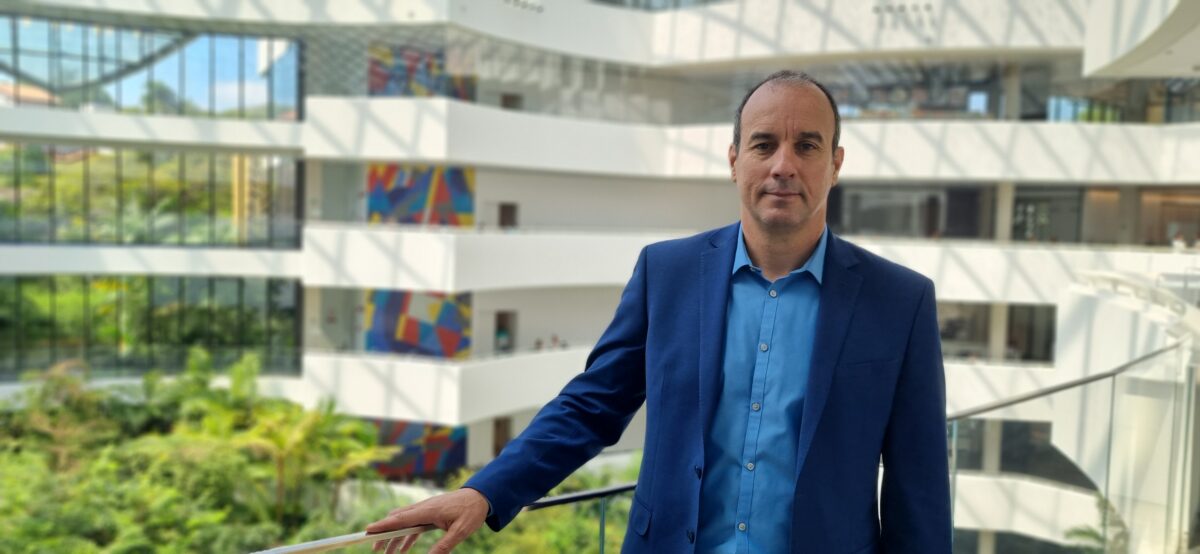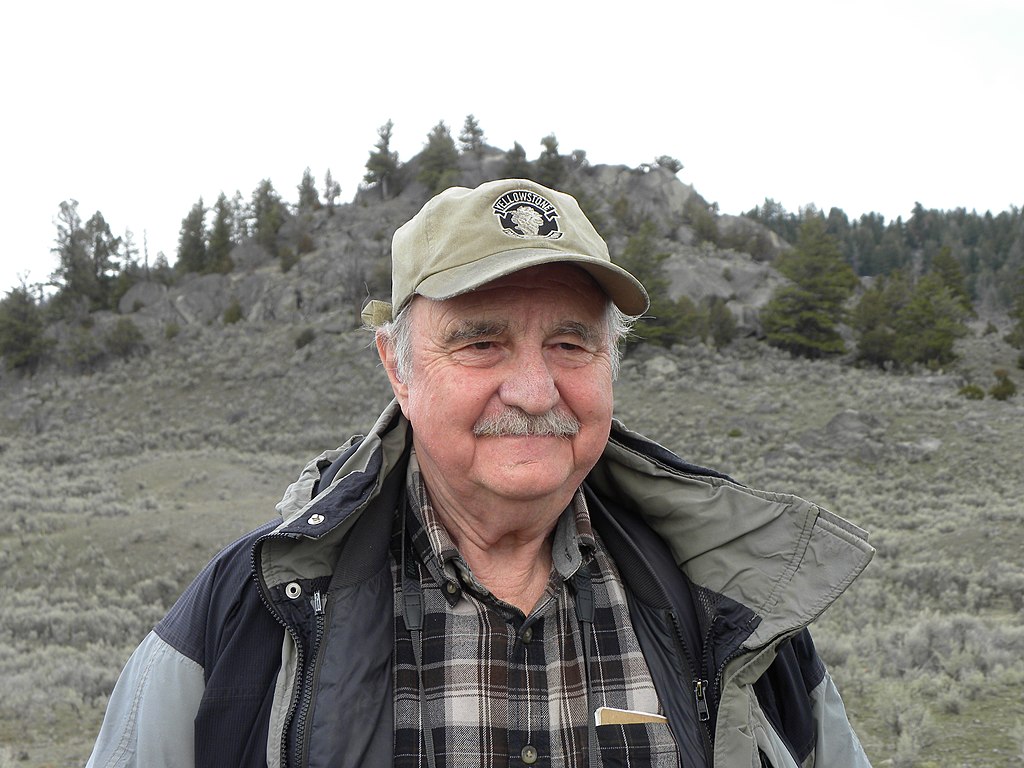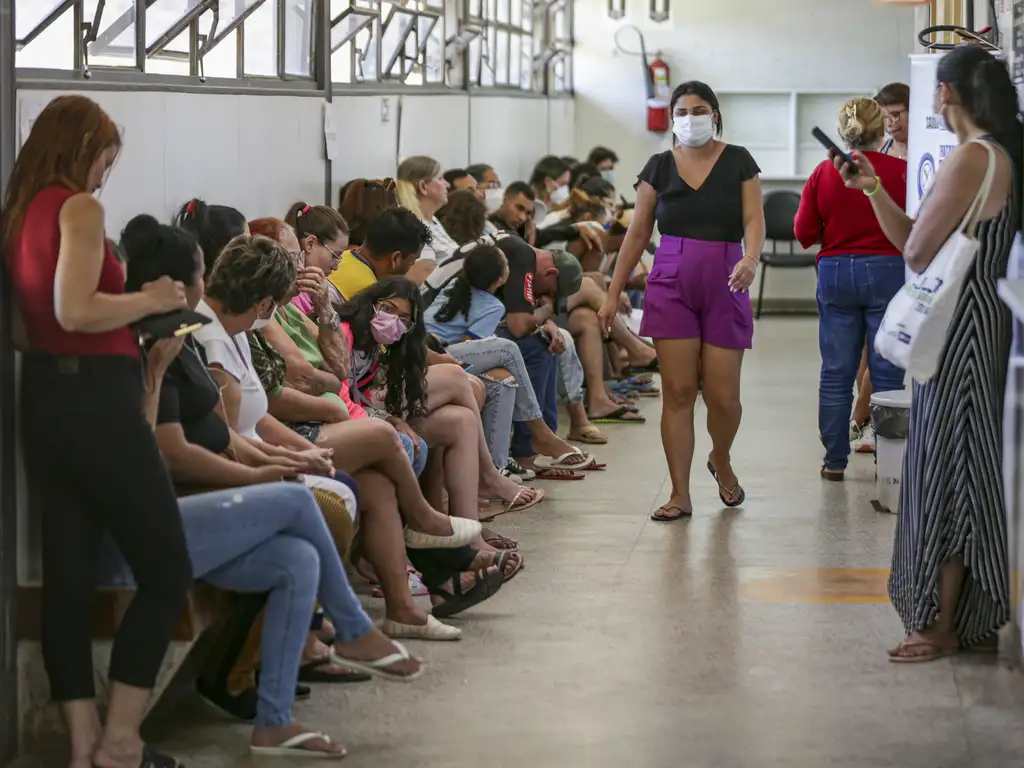 #Interviews
#Interviews
Collaborative effort to unlock Down syndrome
Focusing on personalized medicine, Argentine biologist Joaquin Espinosa outlines how recent advancements in research can help predict risks and enhance the quality of life for individuals with Down syndrome
 Joaquin Espinosa, executive director of the Linda Crnic Institute for Down Syndrome, participated in an event in Brazil, where he presented developments for the Human Trisome Project and emphasized the country’s active involvement in the research | Image: Moura Leite Netto
Joaquin Espinosa, executive director of the Linda Crnic Institute for Down Syndrome, participated in an event in Brazil, where he presented developments for the Human Trisome Project and emphasized the country’s active involvement in the research | Image: Moura Leite Netto
During a meeting with Brazilian researchers at the Albert Einstein Education and Research Center—Cecília and Abram Szajman Campus—in São Paulo, Argentine biologist Joaquin Espinosa presented new discoveries and therapeutic opportunities related to Down syndrome.
Espinosa is the executive director of the Linda Crnic Institute for Down Syndrome, one of the world’s leading research centers in the field, based at the University of Colorado. Established in 2008, the institute is responsible for a broad range of translational research platforms, spanning from basic science to applied research, including clinical trials and medical care.
During his visit, Espinosa also formalized Brazil’s participation, through Hospital Israelita Albert Einstein, in the Latin American arm of the global Human Trisome Project, which is linked to the INCLUDE program and supported by the US National Institutes of Health (NIH). The data collected from this open study is accessible through the TrisomExplorer website.
The primary goal of the Human Trisome Project is to enhance the quality of life for individuals with Down syndrome, a condition caused by the presence of an extra copy of chromosome 21 (trisomy 21), by addressing common phenotypic traits and associated health conditions.
Despite the general incompatibility of chromosomal abnormalities with life, trisomy 21 allows most individuals to lead independent and fulfilling lives, provided they receive early intervention and clinical support.
In 2000, the sequencing of chromosome 21 identified 225 genes and unveiled a distinct clinical profile associated with the condition:
- A lower risk of cancer, atherosclerosis, and allergies;
- However, a higher prevalence of autoimmune diseases, Alzheimer’s disease, lung infections, cardiovascular issues, vision and hearing impairments, and autism spectrum disorders.
According to Espinosa, the extra copy of chromosome 21 affects both the onset and severity of various major medical conditions.
“Understanding this condition will enable the development of a personalized medical approach, incorporating targeted therapies for individuals affected by the diverse range of health issues associated with trisomy 21,” the researcher explains.
Among the ongoing studies, researchers are currently exploring the use of tofacitinib—a drug used to treat immunological skin disorders.
“Trisomy 21 leads to hypersensitive interferon signaling—a biochemical process that inhibits viral replication and activates immune defense cells—which results in immune dysregulation,” Espinosa notes.
Building on this insight, Espinosa’s team has been testing a Janus Kinase Inhibitor (JAKi)—an intracellular protein crucial for inflammatory responses—to reduce the overactive interferon response. This approach aims to alleviate skin conditions caused by immune dysregulation, as well as other common comorbidities in Down syndrome, such as hypothyroidism and cognitive impairment.
In an interview with Science Arena, Joaquin Espinosa discussed the broader objectives of the Human Trisome Project, the inclusion of Latin American countries, and the ongoing progress in personalized medicine for Down syndrome.
Autoimmune Conditions in People with Down Syndrome
Click on the topics to learn more:
-
General Prevalence of Autoimmune Conditions
-
60% of adults with Down syndrome have at least one autoimmune condition.
-
Autoimmune Thyroid Diseases
-
50% have autoimmune thyroid diseases (AITD), such as hypothyroidism or hyperthyroidism.
-
Autoimmune Skin Conditions
-
35% have autoimmune skin conditions.
-
Celiac Disease
-
10% are diagnosed with Celiac disease.
-
Other Autoimmune Conditions
-
- Alopecia areata: 7.7%
- Atopic dermatitis: 27.9%
- Psoriasis: 6.1%
- Vitiligo: 1.9%
- Folliculitis: 20.6%
Source: Human Trisome Project
Science Arena – In the field of multi-omics analysis, what questions is your group seeking to answer?
Joaquin Espinosa – Multi-omics analysis is crucial because it enables us to decipher complex phenomena. In our case, we aim to understand the biological changes induced by the presence of the extra chromosome. We employ a variety of omics tools, including transcriptomics, proteomics, and metabolomics, to analyze individuals across different sexes and ages. By leveraging multi-omics, we can accelerate the discovery process. We gather data without a predefined hypothesis, simply focusing on identifying differences.
What is the INCLUDE project, and what are its main contributions to identifying markers associated with chromosome 21 and advancing the understanding of Down syndrome through large cohort analyses and clinical research?
INCLUDE is a project funded by the National Institutes of Health (NIH) in the United States, focused on investigating how the conditions most affecting individuals with Down syndrome evolve throughout their lives. Within the framework of INCLUDE, we collaborate with the Human Trisome Project, which encompasses approximately 50 research initiatives centered on clinical studies involving large cohorts of patients. The goal is to identify markers that help explain the biological behavior of Down syndrome.
Down syndrome is not classified as a disease, so there is no cure. However, what are the latest discoveries and therapeutic opportunities for improving the quality of life of individuals with Down syndrome?
Life expectancy for individuals with Down syndrome has increased thanks to advancements in medical care and better integration into society. For example, congenital heart defects can now often be corrected through surgery.
Additionally, people with Down syndrome experience slower growth and do not reach their full potential size due to lower levels of growth hormone. Hormone replacement therapy has emerged as a viable therapeutic option to address this issue.
We also know that sleep disorders, such as sleep apnea, are common in individuals with Down syndrome. These disorders can lead to oxygen deprivation and can hinder cognitive development. We are actively working to identify treatments for these conditions.
Why is the inclusion of Latin American countries in the Human Trisome Project important?
Latin America is characterized by significant ethnographic diversity, encompassing a range of races, cultures, diets, and climates. These factors can potentially influence how the extra chromosome associated with Down syndrome manifests in this population.
We are very excited to collaborate with colleagues from Brazil and other countries to understand what Down syndrome is like in these nations and what aspects are similar or different to those we see in the United States.
How will the partnership with Brazil work?
We will have a team in Brazil led by Drs. Ana Cláudia Brandão and Bruna Zampieri, both from Hospital Israelita Albert Einstein, who will contribute data from 250 participants with Down syndrome.
This data will be part of a larger study involving 1,500 participants from across Latin America. All biological samples collected will be analyzed using a common protocol, the same one used in the United States.
Brazil has unique characteristics, such as endemic tropical diseases like dengue fever, which are not found in other countries. Therefore, it is crucial to include the Brazilian population in this project.
By analyzing clinical, cognitive, imaging, cardiometabolic, and multi-omic data, we will be able to make specific discoveries relevant to the Brazilian population. The project follows a unique protocol that will be used by all partners involved.
What are you most looking forward to about the project?
Our expectation is that, in practice, individuals with Down syndrome will require fewer doctor visits and will experience greater autonomy and improved health. We aim to offer diagnoses based on biomarkers that indicate, for example, whether a person is at high risk for conditions like thyroid disease, obesity, or metabolic disorders.
We want to provide personalized interventions by understanding the factors that define each individual’s specific profile and how trisomy 21 manifests in each case.
*
This article may be republished online under the CC-BY-NC-ND Creative Commons license.
The text must not be edited and the author(s) and source (Science Arena) must be credited.


